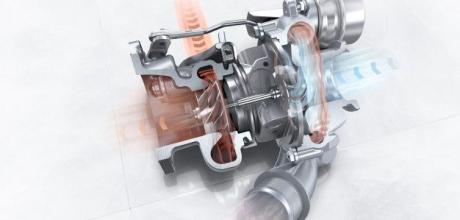Technology explained – Porsche 911 Turbo, but what is the overboost function – and does it work?

We know it’s exclusive to the 911 Turbo, but what is the overboost function – and does it work?
Extra performance is something we all may crave occasionally for our 911. Since 2004, Neunelfer Turbos have had this exact capability in the overboost feature. But what is it?
To understand overboost, we need to consider the engine, because overboost is only possible on a turbocharged motor. The turbocharger supplies additional clean air, under pressure, into the engine to generate more power. Fuel is ideally burnt at a set ratio of 14.7:1 parts air to fuel – the stoichiometric mix, where no excess of either ingredient remains after combustion. Add a turbocharger, and more air is forced in the cylinders compared with atmospheric pressure, permitting an equal increase in fuel rate to keep the ratio the same. More air and fuel means a bigger bang – and a bigger bang means greater output.
Overboost takes this a step further. Any turbo engine operates at a set pressure from the turbos – that’s turbos plural, as overboost-capable Turbo models (the 997 on) use two variable-vane turbos. As engine revs increase, the turbos begin to pressurise to a preset figure of boost. Because the 911 models use variable turbine geometry (VTG), the amount of boost is controlled by the angle of the vanes on the turbine – on average to one bar, at 20 deg C, at sea level. The VTG design combines the benefits of small and larger turbos, and means there is no need for a typical bypass valve, commonly used to control pressure on single turbo units.
Overboost works by increasing that boost pressure for a set time of 10 seconds in medium engine speeds. Under full throttle, between 1,950rpm and 5,000rpm, the turbo vanes alter to generate an extra 0.2 bar, permitting further increased fuelling for a short time. On a 997 Turbo, this takes the torque from 620Nm to 680Nm, and reduces the 50-75mph time from 3.9 to 3.6 seconds. On a 991 Turbo S, that translates to a jump from 700 to 750Nm. The limited duration reflects emissions and the conservative state of the factory setup. While extra performance is patently possible from Porsche Turbo engines, by time-limiting extra boost, emissions are reduced and the strain on mechanical components is lightened. This spare capacity is what aftermarket tuning companies make use of, but remember: manufacturer setups encompass varying fuels, altitudes, temperatures and environments, while achieving quoted performance and minimising warranty claims.

